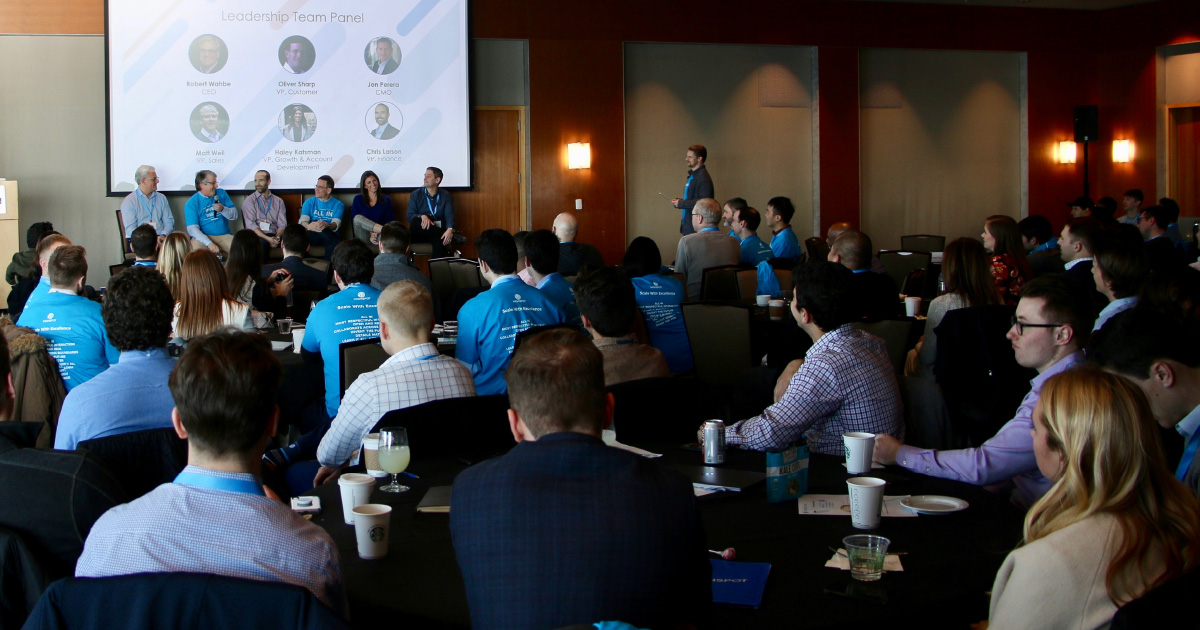The sales kickoff, or SKO, is your go-to-market team’s annual strategy meeting. Done right, a great SKO provides cross-team visibility into major business initiatives for the coming year, motivates the team, and creates momentum. But too often, kickoffs are thrown together at the last minute, resulting in a day of stale presentations and drowsy eyes.
This year, get ahead of the curve. Exceed your team’s expectations, ignite inspiration, and set your company up for success by following these steps.
Define Roles and Responsibilities
The weight of planning a successful SKO should not fall onto one person’s shoulders. Multiple teams need to be involved, and with multiple stakeholders comes a need for clearly defined swim lanes and well-set expectations. Avoid misalignment by outlining roles and responsibilities. Begin by defining primary and secondary stakeholders and their high-level duties. For example:
- Primary stakeholders
- Sales Enablement Team: Build agenda and drive event execution
- Sales Leadership: Approve agenda and all other major decisions
- Marketing – Events: Support event execution and employee communications
- Secondary stakeholders
- Executive Leadership: Provide company buy-in and deliver keynote
- Marketing and Product subject matter experts (SMEs): Develop and deliver presentations
Defining roles creates a clear chain of command that allows for efficient decision-making. It also sets the expectation for secondary stakeholder participation, ensuring critical SME presentations aren’t a last-minute scramble. Once roles are defined, set up a streamlined communication process to ensure alignment from planning through execution.
Plan for Worst-Case Scenarios
Last-minute venue changes, unwell presenters, bad audio-visual — it can happen even with the most detailed plans. Although you can’t control everything, a little extra thought can turn mountains back into molehills.
First, secure backups for everything — including speakers and presentation files. Second, work flexibly. For instance, rather than printing a static agenda, use a dynamic document like Highspot SmartPage technology to provide internal updates. In exchange for a little extra effort, these considerations will allow you to be agile in the face of unexpected turns and secure your SKO’s success.
Focus on Fun
Because the information presented at SKO is critical to your company’s sales success, the last thing you want to do is put your audience to sleep.
Treat your SKO like an exclusive event — start building hype weeks in advance by teasing speakers, locations, and workshops. Then, when the big day arrives, keep the energy high. Celebrate your wins, and recognize top performers in a way that turns victories into tangible success patterns that everyone can use. Ensure your content is rich with visuals and data, break up session formats with interactive workshops, and offer prizes during gamified sessions. During breaks, hire a DJ to spin tunes, and provide plenty of food and beverages.
Mixing in fun will keep your teams refreshed and ready to return to selling renewed.
Prepare a Post-SKO Follow Up
Planning a successful SKO means thinking about your follow up. After all, it’s unlikely that salespeople will remember everything they encountered over the course of a multi-day SKO. How will you continue to engage reps and keep material fresh after the event?
A combination of ongoing and just-in-time training and coaching should do the trick. These elements ensure reps’ long-term success. Both continuous training and guidance at the point of action will prolong your SKO momentum, ensuring reps are prepared for customer conversations, whenever and wherever they happen.
Put Your Best SKO Forward
With clearly defined roles, contingency plans, follow-ups, and a spark of magic to make it shine, your SKO will be set to exceed even the most seasoned reps’ expectations.




